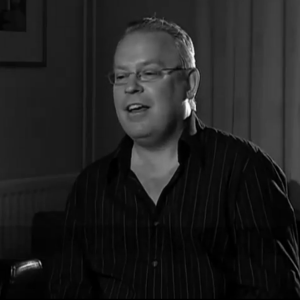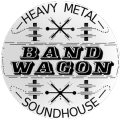“Reading about it [the NWOBHM] makes me laugh, I must admit,” Paul Samson once told me. “I mean, I’ve been around since 1974, I’ve played on the same bill as bands like Bees Make Honey and Slack Alice – remember them? Nah, there’s nothing really ‘new’ about me. Samson played 230 gigs at the height of punk, in 1977, but did we get any mentions in the press then? Did we fuck.”
Paul Samson’s argument was a familiar one, and he continued along the lines of, “there is no heavy metal revival because the music never went away”, citing Saxon (who played the clubs in an around their home town of Barnsley for years under the monicker Son Of A Bitch, and to zero recognition) to back up his views. But while I had sympathy with Samson’s comments at the time, he was unable to sway me from the belief that the NWOBHM was a genuine movement of the times, and that for every dues-paying guitarist like himself there were at least two or three youngsters who’d sprung up from nowhere and were giving the music a new impetus, and a new meaning.
I actually found an unlikely supporter in Samson vocalist Bruce Dickinson (who by this time had joined the band, initially calling himself Bruce Bruce and sporting a droopy moustache straight out of present-day ‘118-118’ advertisements).
“We played Liverpool the other night,” Bruce related to me, “and to tell the truth we didn’t expect to do that well. The two days prior to our gig both AC/DC and Whitesnake had done shows in the city and we didn’t hope for much of a crowd, we thought all the kids would’ve spent their money on the name acts and wouldn’t have been able to afford to come and see us. But as it happens we did better than we anticipated, we drew about 350 people, which was respectable.”
Bruce continued: “After our set a punter came up to us, started chatting, and I asked him, ‘Did you go and see Whitesnake?’ ‘No,’ he replied, ‘I didn’t bother with them, AC/DC neither. These days the only decent bands are people like you.
“‘Bands that are part of the New Wave Of British Heavy Metal.’”
So that’s a taster of the story behind the birth of the NWOBHM. Despite my reservations (and ongoing obsession with megabuck American bands such as Kiss) Sounds sensed that it was on to a good thing. The new British rock scene began erupting and I found myself being dispatched to cover a dizzying array of exciting (and occasionally, if truth be told, not so exciting) new acts.
Meantime, the term ‘NWOBHM’ was spawning a whole host of lookalike acronyms. A little under a year after the Music Machine show, the NENWOBHM (North East New Wave Of British Heavy Metal) was born. This crazy term had its origins in Wallsend, a matrix of heavy metal mayhem just down the road from Newcastle-upon-Tyne (it says here), with bands such as Fist, Raven, White Spirit and The Tygers Of Pan Tang making astonishing inroads despite being on the obscure (and aforementioned) Neat Records label. Neat owner David Wood started the Impulse parent company in 1966, gradually building it up to a 16-track studio, providing recording facilities for soloists and bands of all sizes, shades, dispositions and artistry. But what is not commonly known is that Neat wasn’t Impulse’s first label. The folk-based Rubber had been around for years previous, even notching up a major seller with Mike Harding’s ‘Rochdale Cowboy’…
But Cronos/Conrad of Venom, who were also signed to Neat, claimed that the label’s success came about more by luck than judgment.
“The MD [David Wood] had a nose for money and started to sniff around at the increased interest in heavy music,” he revealed. “Before Venom took off I was helping out at Impulse and the MD asked me to get one of these new rock bands in the studio. He said I could work as A&R for him. I chose The Tygers Of Pan Tang, a band I saw perform every week in venue called Mingles, now called Idols.
“The MD had recently started a new label called Neat that had only released two singles, a band called Motorway, and the single died on its arse, and a young girl called Joannie McKenzie; this also died on its arse, The Tygers were Neat 03 [the single ‘Don’t Touch Me There’] – the first rock act from the stables of Impulse, and the doors suddenly burst open!”
The Neat story probably deserves an entire Record Collector feature by itself. What’s more, there’s a strong argument for claiming that Venom were the most important band to come out the NWOBHM, ahead of Def Leppard and Iron Maiden, even. That’s because unlike the latter two more traditionalist acts, Venom – a trio made up of Cronos on bass/vocals, Mantas on guitar and Abaddon on drums – invented at least two, and probably many more, brand new musical styles: Thrash Metal and Black Metal.
Says Cronos/Conrad today: “I got pissed off when I saw a Heavy Metal chart in a music magazine that had Michael Jackson’s ‘Beat It’ in it [featuring Eddie Van Halen on guitar], and that’s when I said that Venom were not heavy metal, we were much more than that…”
Or, as one music commentator put it at the time: ‘Home taping is killing music. And so are Venom’.
Sounds closed 1979 with a lengthy NWOBHM update, rounding things up neatly in a state-of-the-nation story: Iron Maiden, Def Leppard, The Tygers Of Pan Tang, Praying Mantis, Witchfynde, Diamond Head, Angel Witch and Sledgehammer all featured prominently, and there were also worthy mentions for the likes of Nuthin’ Fancy, Vardis, Ethel The Frog, Toad The Wet Sprocket, Race Against Time, Zorro, Killdozer, Dragonfly, Bastille, Hellenbach… the list just went on and on. Today, you can log on to the website nwobhm.com to see just how many hundreds of bands crawled out of the woodwork in those long-ago days, and how many are still around and releasing records in the Noughties.
In 1989, to celebrate the 10th anniversary of the NWOBHM, Metallica drummer Lars Ulrich and myself compiled an album featuring the best of the genre through Phonogram.
Lars came up to visit me (I was editing Kerrang! at the time) and a writer for Sounds called Neil Perry at our offices. At that time we worked at a place called Ludgate House on the south side of London’s Blackfriars Bridge. The building had been specially constructed for the Daily Express newspaper and we had some space there. The Express had moved from Fleet Street which had plenty of pubs and drinking dens, and (as I understand it) the paper’s often drunken journalists would only agree to make the move to a less salubrious part of town if the proprietors agreed to incorporate a ground-floor bar into the building plans! So, incredibly, we had use of a pub downstairs at Ludgate House called Poppins Bar where we went to chat with Lars.
The idea of the NWOBHM album came about after several crates of Mexican Sol beer. We thought all these great (big and little) bands deserved more recognition, even though the beginning of the NWOBHM was merely a decade back down the line.
I’ll be honest and say that Lars and the label guy at Phonogram, Dave Thorne, did most of the legwork in tracking down the bands and master tapes for what turned out to be a lavishly packaged double vinyl album. But I certainly got all the press clippings et cetera together for the sleeve, which took some considerable time.
The biggest problem as far as track selection was concerned was with a band from South Shields called Mythra and their track ‘Death And Destiny’ on the forgotten Guardian label. I really wanted to include this number but Lars wasn’t so keen – I later learned that ‘Death And Destiny’ was supposed to have influenced Metallica’s ‘Kill ’Em All’, so maybe Lars didn’t want his roots showing too much! Anyway, Lars eventually said OK to the track but we couldn’t get hold of the master tape. Apparently it was owned by one of the band’s uncles who had financed recording of the song; he’d never heard of Lars or Metallica and wouldn’t let it out of his possession...
But despite (or maybe because of) the absence of Mythra, the NWOBHM album wasn’t a big seller for Phonogram; it would probably have been better off on an indie label. As it was, the album’s relative lack of success contributed (or so I believe) to Dave Thorne’s eventual departure from Phonogram.
In actual fact, I didn’t know too much about Lars’s outrageous NWOBHM fanship prior to Metallica, although I did find out later he was in the audience at an early Diamond Head show I attended in Portsmouth – he’d travelled all the way from Denmark just to see the band. The support act for the show was Silverwing who were terrible that night – which is probably why Metallica are never likely to do a cover version ‘Flashbomb Fever’, a song I wrote for the band! A certain Jess Cox had a little more luck, however…
Good and bad things came out of the NWOBHM and the following two postscripts might help put matters into perspective, here in 2004.
The first PS comes from Cox, an early singer in The Tygers Of Pan Tang who went on to form Lionheart, dubbed ‘the first NWOBHM supergroup’, with Iron Maiden guitarist Dennis Stratton.
Following Lionheart’s failure, Cox left the music industry completely and “eventually became a journalist, of all things,” he jokes. “Anyway, while I was working on Newcastle’s daily paper, The Journal, I went to interview David Wood of Neat Records fame for a human interest story and he asked me to do some press on his label’s latest releases…”
That triggered Cox’s return to the music industry. He began wheeling and dealing, and through circuitous means managed to pick up the back catalogue of Scottish NWOBHM stalwarts Holocaust “for a few grand”.
Then what happened? Metallica covered Holocaust’s track ‘The Small Hours’ on their ‘Garage Days Re-revisited’ EP, and also included it on their ‘Garage, Inc.’ album.
“This makes me a good income,” says Cox. “I can pick and choose what I do now.”
Lucky sod!
The second postscript is from that man Neal Kay again – and, if this article has succeeded in making you feel even the smallest amount of affection for the NWOBHM, then I strongly suggest that you keep a pack of Kleenex handy.
“Last week [our conversation took place on February 14] I heard that they’ve pulled down the Bandwagon – they’ve actually demolished the old Heavy Metal Soundhouse,” Kay complained. “That sad news just reached me today. Some of our old fans went there for a beer for old times’ sake and got confronted by a load of rubble. I believe they’re going to build a supermarket on the site. But what can you do?
“That’s progress, I suppose,” Kay concluded. “But we mourn with great sadness a place of those times; those truly great times.”
In the old days I would have berated Kay for his overbearing hippy sentimentality. But even though it was Valentine’s Day evening, this was no time for hearts and flowers.
Because although the Soundhouse may be no more, the musical marvel it played a massive part in creating, still endures.
Geoff Barton

an editor of Sounds magazine. He currently works for Classic Rock.



